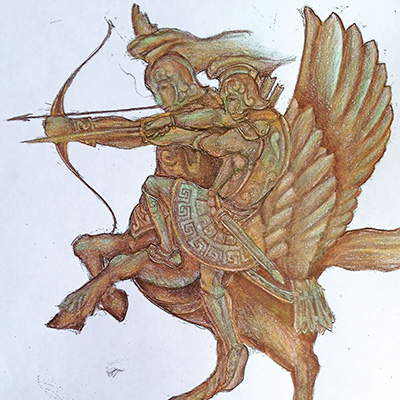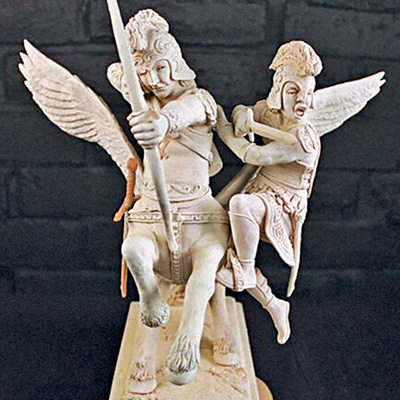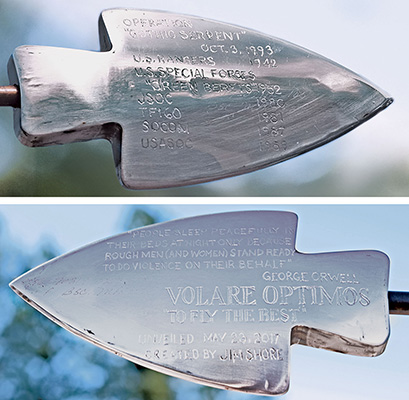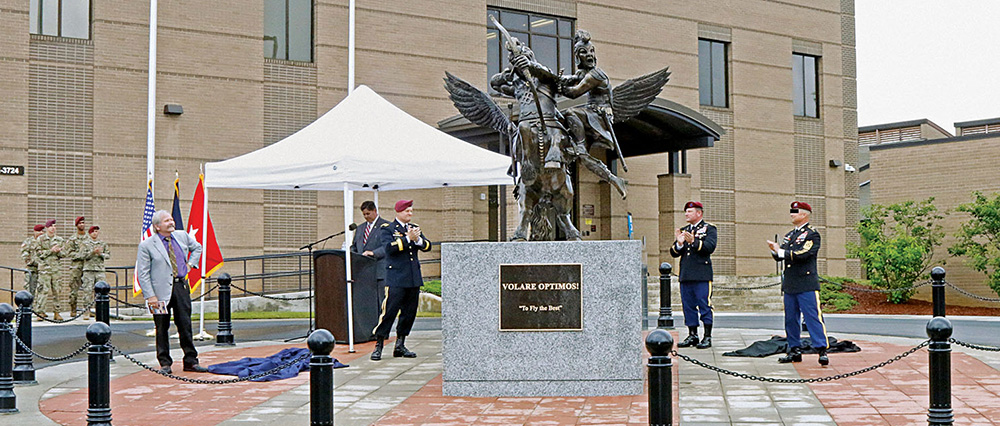NOTE
IAW USSOCOM Sanitization Protocol for Historical Articles on Current Operations, pseudonyms are used for majors and below who are still on active duty, unless names have been publicly released for awards/decorations or DoD news release. Pseudonyms are identified with an asterisk (*). Source references (end notes) utilize the assigned pseudonym.
DOWNLOAD
Standing at the entrance to the U.S. Army Special Operations Aviation Command (Airborne) (USASOAC) headquarters at Fort Bragg, NC, is a ten-foot tall, 2,500 pound bronze statue of a winged Centaur. Ares, the Greek god of war, is dismounting to engage in battle.1 The monument is the culmination of years of design, approvals, engineering plans, and collaboration between a number of individuals.
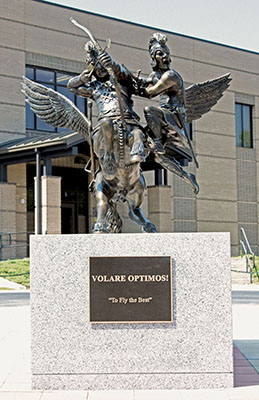
The project had its origins in conversations between U.S. Army Special Operations Command (USASOC) senior leaders and James G. Shore, a renowned artist and sculptor. In 2012, Shore was among a group of individuals invited to a three-day demonstration of special operations forces. After the presentation, then-USASOC commander, Lieutenant General (LTG) John F. Mulholland, Jr., asked to meet with Shore to discuss the possibility of developing a small memento for soldiers completing special operations courses.2 At LTG Mulholland’s suggestion, Shore also met with Brigadier General (BG) Clayton M. Hutmacher, then the Commanding General (CG) of USASOAC, and received a briefing on special operations aviation.3 When LTG Mulholland changed command in July 2012, Shore anticipated that the idea would evaporate. BG Hutmacher, however, was interested in developing a larger statue for USASOAC, and worked with Shore to carry on the project.4 Having decided on a monument to special operations aviation, Shore asked to design and fund the statue. BG Hutmacher welcomed the offer, and charged USASOAC Command Chief Warrant Officer (CCWO) CW5 Robert D. Witzler with overseeing the project.5

